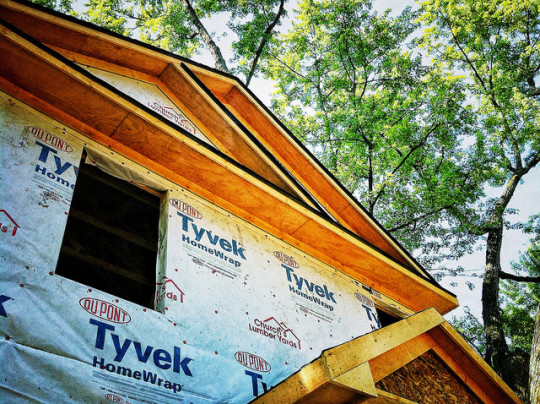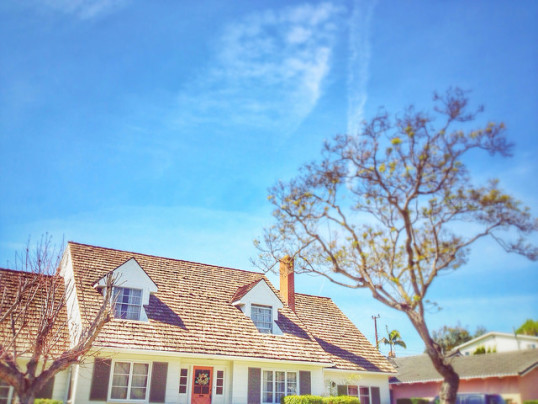Americans are more optimistic about the housing market than they have been at any time since the real-estate recovery began, according to a recent survey from Trulia. In fact, 74 percent of respondents agreed that buying a home was part of their personal American Dream, with an even larger percentage of potential first-time buyers expressing the same. Among 18-to-34 year olds, 78 percent said they count homeownership as part of their dream, up from 65 percent in 2011. Young Americans who are currently renting were even more enthusiastic about buying a home, with 93 percent saying they hope to buy someday. In addition, participants expressed increased optimism that 2015 would be a better year than 2014 for selling a house. The improved sentiment is good news for residential real estate, especially entering a year that many analysts expect will see gains in home sales due, in large part, to more first-time buyers entering the market. Improved employment conditions, expected wage growth, and the release of pent-up demand to buy homes is forecast to drive the housing market in 2015. However, despite forecasts of continued improvement, 2015’s gains aren’t expected to be as sharp or dramatic as those of the past few years. Instead, there should be a less volatile and more gradual climb upward as the market becomes more stable. More here.
Archive for December 2014
Buying A Home Still Cheaper Than Renting
A recent analysis of home prices and rent in more than 500 U.S. counties found that buying a home was cheaper than renting in the majority of housing markets across the country. In fact, according to data released by RealtyTrac, buying a median-priced home was more affordable, compared to rent on a three-bedroom property, in 68 percent of the analyzed counties. However, a deeper look inside the numbers shows that, in most of the markets with the biggest increase of young buyers, buying was actually equal to or more expensive than renting. And because first-time buyers are a key demographic – and one likely to be debating the pros and cons of homeownership – this presents a potential concern. Daren Blomquist, vice president of RealtyTrac, said in today’s housing market many of the markets with the jobs and amenities younger buyers want have hard-to-afford rents and even harder-to-afford home prices, while the more affordable markets have fewer well-paying jobs and tend to be off the beaten path. Still, expected pent-up demand among first-time buyers is expected to boost home sales numbers in 2015 and help accelerate the pace of the housing market’s overall recovery. More here.
November New Home Sales Down 1.6%
Sales of newly built single-family homes fell 1.6 percent in November from October’s sales rate. New home sales were also down 1.6 percent from one year earlier. The drop – which included decreases in three of four U.S. regions – brought sales to their slowest pace in four months and fell well below economists’ expectations for the month. Sales were down 12 percent in the Northeast, 6.4 percent in the South, and 6.3 in the Midwest. The West, on the other hand, saw a nearly15 percent increase in new home sales. Despite the overall downturn, however, analysts warn not to place too much importance in monthly readings, as month-to-month estimates can be volatile and are often revised after their initial release. Also in the report, the median sales price of new homes sold in November was $280,900; the average sales price was $321,800. At the end of the month, there was a 5.8-month supply of new homes available for sale at the current sales rate. More here.
Existing Home Sales Slip In November
Sales of previously owned homes slipped in November, according to the National Association of Realtors. The decline follows a calendar-year high in October and brings sales to their lowest level since May. Still, existing-home sales were above year-before levels for the second straight month. Lawrence Yun, NAR’s chief economist, said sales activity was choppy in November despite mortgage rates falling to their lowest levels of the year. According to Yun, the number of real estate investors active in the market is declining as home prices rise. And, in fact, a closer look at the numbers reveals fewer all-cash sales and individual investors active in the market. Instead, the number of first-time buyers has rebounded, climbing to 31 percent of all November sales, the highest percentage in more than two years. Also affecting November sales totals, the number of homes available for sale is falling. Total housing inventory was down 6.7 percent in November. Tighter inventory, however, is due largely to seasonal factors, as fewer people put their homes up for sale during winter months. Also in the report, the median existing-home price for all housing types was $205,300 in November, 5 percent above last year. More here.
A Year-End Look At Past Predictions
At the beginning of every year, experts and analysts make predictions about what the year will hold for the real estate market. From home sales to mortgage rates, there are many forecasts predicting what will be in store for buyers and sellers over the course of the year but not as many reviews of whether those forecasts were right or wrong once the year is through. Freddie Mac’s chief economist, Frank Nothaft, is one of the few willing to test his predictions against the year-end totals. In a recent analysis, Nothaft found that many of Freddie Mac’s key projections turned out to be more right than wrong this year. For example, they projected that home prices would continue to increase, but at a slower pace than in 2013. And, as expected, there was a significant slowing from the rapid price gains seen the year before. They also projected that that mortgage market would tilt toward home purchases after a drop in refinance activity, which was also accurate. Mortgage rates, on the other hand, were forecast to rise in 2014 when, in fact, they moved lower – even hitting calendar-year lows early in December. Home sales were also forecast to improve from the year before but, due to unexpected economic volatility and unseasonably rough winter weather during the first quarter, home sales started the year slow and will come in 500,000 short of Freddie Mac’s projection. More here.
Forecast Calls For Housing Growth In 2015
Though the economy and housing market have been largely up-and-down this year, Fannie Mae’s Economic & Strategic Research Group is forecasting improvement for 2015. In fact, according to Doug Duncan, Fannie Mae’s chief economist, the group anticipates a significant increase in the number of new homes built next year due to stronger employment and improvement in Americans’ household income. Improved employment prospects and rising income is predicted to release pent-up demand to buy homes and, as a result, should help boost home sales in addition to increasing the number of new homes built. And, since new residential construction has historically been a driver of economic activity, increased housing starts should help boost the broader economy as well. In recent years, household income has been relatively flat, which has dampened demand to buy homes and kept the housing market from enjoying a more robust recovery. Duncan says Fannie Mae expects total housing starts to increase by 22 percent in 2015, with total home sales rising 5 percent, and total mortgage originations rising to $1.13 trillion for the year. More here.
Mortgage Rates Drop To 19-Month Low
According to the Mortgage Bankers Association’s Weekly Applications Survey, average mortgage rates fell to their lowest level since May 2013 last week. Rates dropped across all loan categories, including 30-year fixed-rate loans with conforming and jumbo balances, mortgages backed by the Federal Housing Administration, and 15-year fixed-rate loans. Mike Fratantoni, MBA’s chief economist, said interest rates dropped sharply due to plummeting oil prices and heightened concerns regarding global economic growth. Despite the large drop in mortgage rates, however, demand for mortgage applications fell 3.3 percent from the previous week. The Refinance Index showed no change from one week earlier, though as a share of total mortgage demand refinance activity increased to 66 percent. The seasonally adjusted Purchase Index, on the other hand, slipped 7 percent. The unadjusted Purchase Index is now just 5 percent lower than the same week one year ago. The MBA’s weekly survey has been conducted since 1990 and covers 75 percent of all retail residential mortgage applications. More here.







